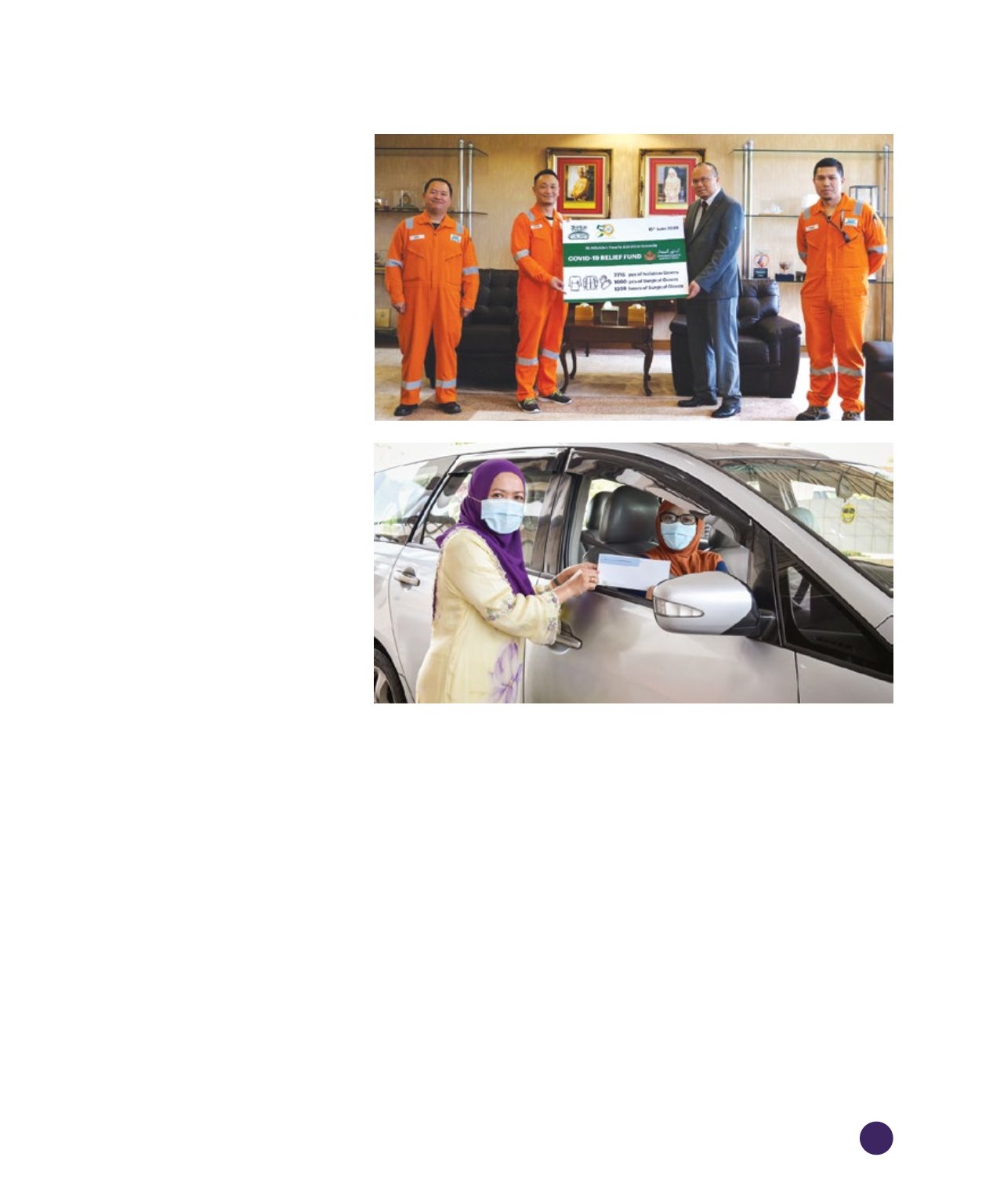

147
THE ENERGY SECTOR
LNG also regularly engages staff and business
partners on green campaigns such as celebrating
environmental international days, recycling
drives and carpool campaigns.
Additionally, to support Brunei Vision 2035 in
the field of education, Brunei LNG recognises
the achievement of best students, teachers
and schools in Belait District in an Academic
Excellence Awards held annually since 2002.
Brunei LNG also inked a partnership with
UTB in 2005 to sponsor and support the
Creative Innovative Product and Technological
Advancement (CIPTA) Award – a competition
aimed to promote a culture of ‘creations,
innovations, and inventions’ among the people
of Brunei. The competition is held biennially
with His Royal Highness Prince Haji Al-
Muhtadee Billah ibni His Majesty Sultan Haji
Hassanal Bolkiah Mu’izzaddin Waddaulah, the
Crown Prince and Senior Minister at the Prime
Minister’s Office and Chairman of Brunei LNG, as
the patron of the competition.
A pioneer in the LNG industry
Brunei LNG is currently the longest running
commercial LNG plant in the world – an
incredible success and achievement for the
company – and Brunei LNG remains invested in
continuous rejuvenation activities of its assets
to ensure that the plant is reliable and safe to
produce and supply LNG to its customers for the
long term.
Brunei LNG was the first LNG plant to do major
rejuvenation replacing instrumentation and
upgrading safety standards in liquefaction,
storage and loading facilities back in 1994.
Brunei LNG made headlines in the oil and
gas industry again when it replaced its main
cryogenic heat exchanger (MCHE) on site in a live
plant in 2005. This was a first for Brunei LNG and
a first worldwide as a replacement of MCHE had
never been undertaken before in an LNG plant
anywhere in the world. The MCHE is the heart of
any LNG plant and is the machinery responsible
for cooling natural gas to –160 degrees Celsius,
the temperature required to turn natural gas into
liquid.
Being one of the first LNG plants to start up in
the early 1970s, Brunei LNG was also the first
to start replacing major parts of the plant. The
successful completion ahead of schedule,
without production leaks and without HSE losses
had clearly demonstrated that implementing
complex engineering activities in an operating
plant could be undertaken safely, ahead of
schedule and with quality results.
Nevertheless, being one of the first LNG plants to
start up, Brunei LNG is bound to face emerging
challenges such as spare parts that are no longer
being produced. As a result, new and innovative
technologies to address these emerging
challenges are continuously pursued – and in
this case, 3D printing technology was utilised.
Brunei LNG recently 3D printed its first part – a
316L Stainless Steel Lime Dosing Pump Impeller
– using 3D printing technology with the help of









